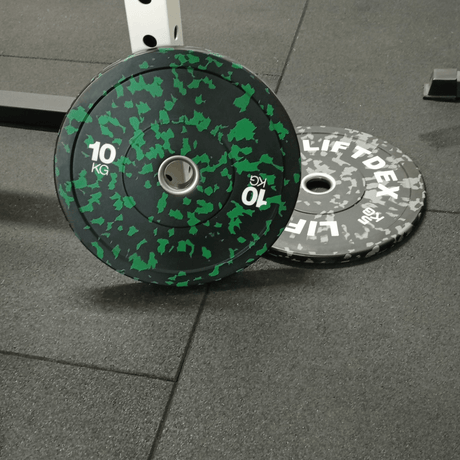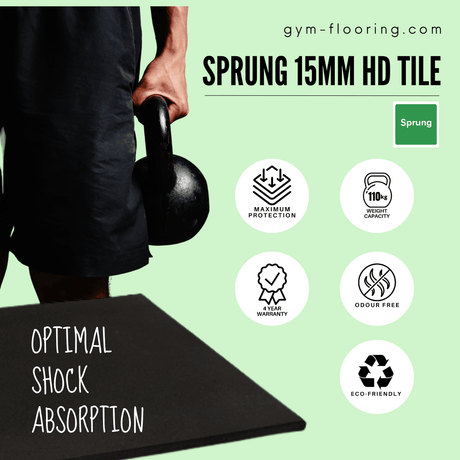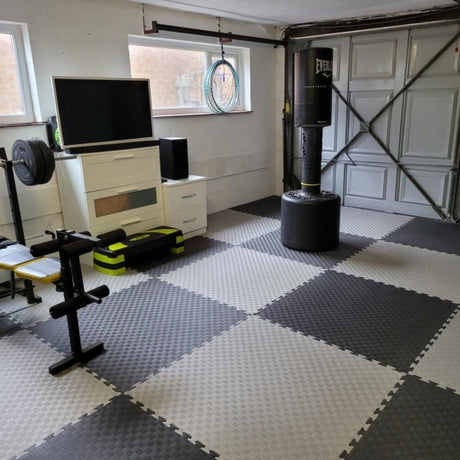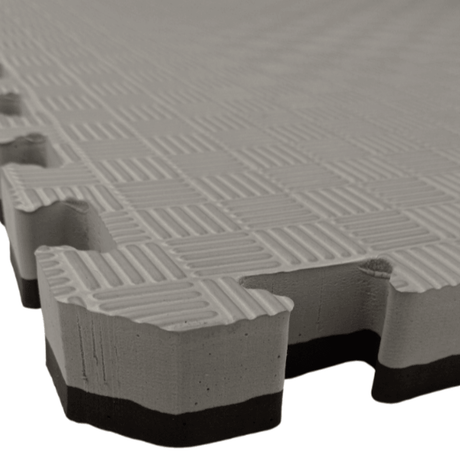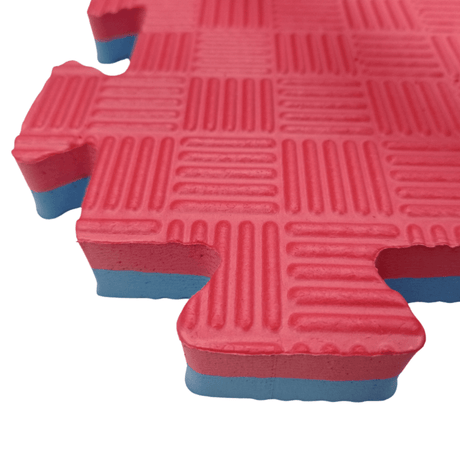Whether you're a professional or leisure player, having a football pitch in your garden means you can train at home without having to rely on external sports facilities.
With the advent of synthetic sports turf, it has never been easier to have a robust, low maintenance football or mini football pitch in your backyard for the whole family to enjoy. Gone are the days when players had to settle for the uneven surfaces of local parks or crowded and expensive training centres.
This article will give you tips on planning and designing your own garden football pitch, covering turf preparation and installation as well as maintenance advice on how to keep it looking great for years to come.
Table of Contents
Different Types of Astro Turf Football Pitch
Designing Your Turf Garden Football Pitch - Steps to Create a Back Garden Football Pitch
Maintaining Your Artificial Grass Football Pitch
Benefits of a Garden Football Pitch
Different Types of Astro Turf Football Pitch

Before we get into the design and installation steps, let’s first look at the different types of football turf. Astro turf for garden pitches is more than just artificial grass; it’s advanced, technological fibres designed to optimise player performance. There are two standards of turf for football, determined by the specific playing and certification requirements.
These turf systems have specific sub-base requirements such as infill and shock layer thickness for professional football. Recreational football has fewer requirements so it’s a more suitable and cost effective option for garden pitches which simplifies the installation process as well as the cost.
2G Football Pitch Turf
Second generation or 2G football grass is short, dense fibres with sand infill and is used in school and community football as well as other sports. It looks and feels natural and is a popular choice for garden football pitches. It is generally has a lower pile height and less sub-base requirements than 3G systems.
3G Football Turf
3G, or third-generation football turf has longer fibres with sand and rubber infill. This type of synthetic grass has superior shock absorption and is ideal for garden mini pitches used for intensive training and frequent play.
Key Differences:
- Durability: Both 2G and 3G options are designed with longevity and lifecycle in mind, however 3G turf is the most durable because of its advanced features. 2G turf is recommended for garden football use.
- Maintenance: 2G turf may require more maintenance than 3G because it can require regular sand infill top ups compared to 3G which requires less infill maintenance.
- Cost: 3G turf costs more because of its thicker pile and more complex infill and subbase requirements.
Designing Your Turf Garden Football Pitch - Steps to Create a Back Garden Football Pitch

Many online guides offer professional design help from basic layouts to National Football courts which are great for determining the size and dimensions of different garden pitch options.
Alternatively you can hire an experienced astro football pitch installer to do the ground preparation, install a weed membrane and build a solid sub-base.
Planning
-
Measure the Area: Measure the dimensions of your garden football pitch. A mini pitch is about 30m x 20m but you can adjust the size to fit your space and needs.
-
Choose the Turf: Choose between 2G and 3G artificial grass depending on your budget and usage requirements. Also decide if you want a shock layer which is a closed-cell foam that improves shock absorption and player safety.
-
Prepare the Sub-base: The construction for a typical 2G grass sub-base is as follows:
- Synthetic Grass
- Silica Sand Infill
- 10mm or 12mm Shock Pad
- 50mm layer of Blinding
- 200mm layer of stone type 3"
- Geotextile membrane
- 80mm diameter land drain
Installation
-
Lay the Base: Lay a layer of crushed stone or grit to create a solid base for your astro turf football pitch.
-
Shock Pad Layer: Install the shock pad layer which is recommended for extra safety and playability.
-
Install the Edging: Define the boundaries of your football pitch with treated timber or plastic edging.
-
Lay the Artificial Grass: Lay the artificial grass over the prepared base making sure it fits snugly against the edges.
-
Infill: Spread sand or a mixture of sand and rubber infill across the turf to add weight and support the fibres.
-
Markings: Use tape to mark the football court lines then apply specialist synthetic grass paint to finish the pitch lines.
-
Accessories: Consider buying goalposts to complete the pitch.
Maintaining Your Artificial Grass Football Pitch
Maintaining your garden football pitch is much easier than natural grass. Here’s some helpful tips:
- Daily Cleaning: Clear away leaves, debris and any other foreign objects from the surface.
- Brushing/Raking: Use a stiff brush or rake to keep the artificial grass fibres upright especially in high traffic areas.
- Infill Top-up: Check and top up the infill regularly to maintain the pitch’s level, upper soil stability and resilience.
- Deep Cleaning: For a deeper clean wash the turf with a mild detergent and water solution then rinse with fresh water.
Benefits of a Garden Football Pitch

Installing a new artificial grass pitch offers many advantages including year round use, improved playability and the ability to practice football at home. Let’s look into these benefits in more detail.
- Low Maintenance: Unlike natural grass artificial turf requires minimal upkeep, no need for regular mowing, weeding and fertilising.
- Authentic Look: Astroturf
- looks and feels like natural grass with a lush and dark green appearance
- Durability: Designed to withstand heavy use while maintaining its condition for years.
- All-Weather Play: Gameplay can be extended over wet and colder seasons
- Safe and Comfortable: Cushioned surface minimises the risk of injuries.
- Versatility & Inclusivity: Turns your backyard into a sports space for the whole family to use anytime.
- Encourages Exercise & Goal Setting: A home football pitch can motivate young athletes and sports enthusiasts to train and set personal goals.
FAQ
Is there a higher risk of footballers injuring themselves or slipping on artificial grass?
No. Modern artificial grass is designed to have the perfect blend of resilience and traction for football. For professional play 2G and 3G advanced technology with proper shock pads and groundworks are required to meet standards.
Is a turf football pitch comfortable?
Yes turf pitches are designed with comfort in mind and together with the recommended sub base system and shock pad layer provides the highest quality game experience.
What are the temperatures like in summer with fake grass?
Artificial turf is excellent for staying neutral during hot weather as well as colder weather conditions and is UV resistant. The sun will not affect it's performance or aesthetic.
When installing your fake grass do you use a layer of sharp sand or silica sand?
Silica sand is recommended for astroturf installation as it’s finer.
Do you need a specialist to lay your artificial grass?
No you don’t need a specialist installer, however if you don’t have prior experience or knowledge it’s recommended.
What thickness of turf should I choose?
Check out our turf thickness guide:

FAQs for Football Clubs
What are the benefits of artificial grass football pitches for football clubs?
Football clubs prefer artificial grass football pitches because of their durability and low maintenance. Unlike natural grass pitches artificial turf pitches can withstand heavy use without deteriorating, perfect for training and competitive matches. This consistency means games are rarely disrupted by weather conditions, a reliable playing surface all year round.
"When games are called off due to unplayable grass pitches, players are left without their weekly run out. That’s where 3G pitches come in, providing an alternative surface so games can go ahead. They also help to prevent overuse of the countries grass pitch stock, thus protecting them for match play"
Football Foundation
How do synthetic football pitches compare to natural turf pitches in terms of performance?
Synthetic football pitches have a consistent playing surface very similar to natural turf pitches which can be affected by weather and wear. Artificial football pitches have uniform traction and ball bounce with an excellent quality of play. Natural grass pitches have the traditional feel which artificial turf football pitches are engineered to mimic.
What maintenance is required for artificial turf football pitches?
Artificial turf football pitches require minimal maintenance than natural grass pitches. Routine tasks are brushing to keep the turf upright, checking for debris and ensuring proper infill levels. These maintenance practices preserves the quality of the artificial football pitch, extends its life and keeps it safe to play on.
Why would football clubs choose artificial pitches over natural ones?
Football clubs might choose artificial pitches because they are more resilient and cost effective in the long run. Artificial grass pitches require less water, fertilisers and mowing than natural turf pitches, lower operational costs. Artificial pitches can be used more frequently without degradation, perfect for clubs that want to maximise field usage.
Conclusion
Transforming your garden into a mini football pitch with artificial grass is a convenient and durable solution for practice and training. Whether you dedicate a small area or your entire backyard, synthetic turf is a low maintenance, all weather playing surface that can be used all year round.
From planning and installation to the final touches of adding goalposts and marking pitch lines follow these steps to turn your outdoor space into a ready to use astro turf football pitch.
Browse our range of 2G and 3G solutions for the best artificial grass pitch systems for your garden space.





